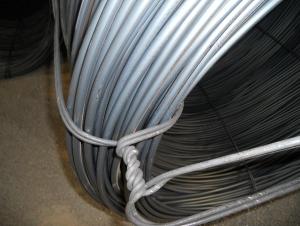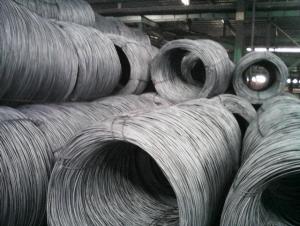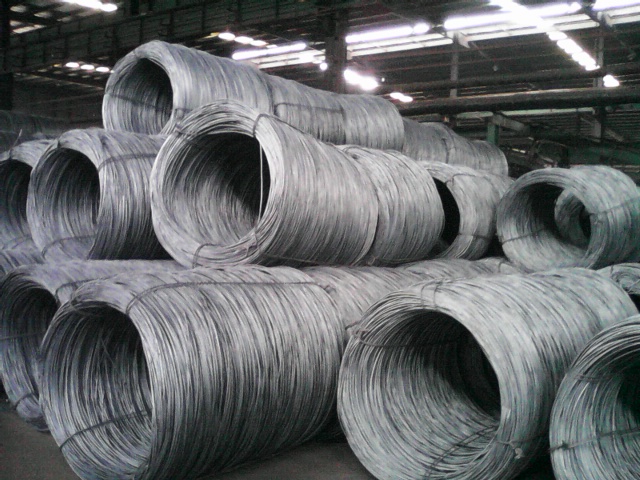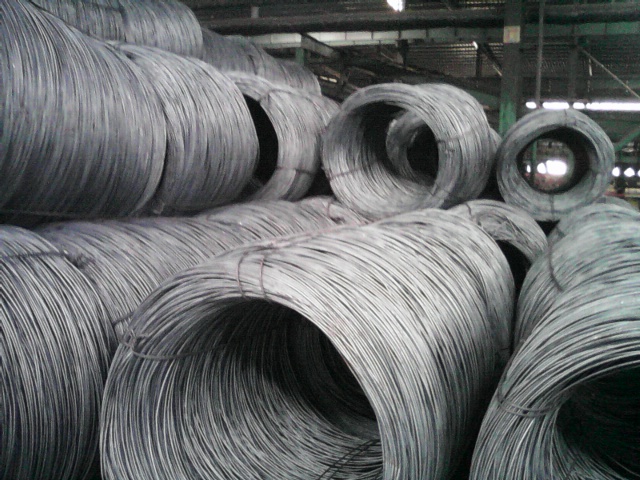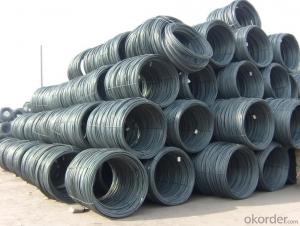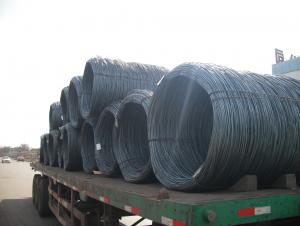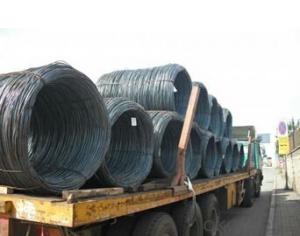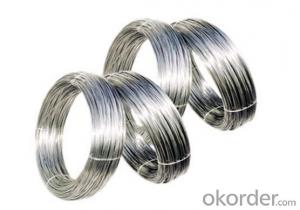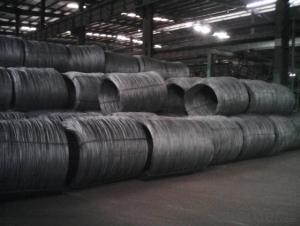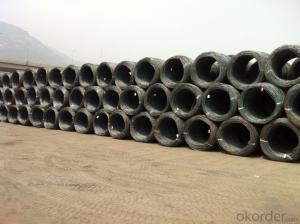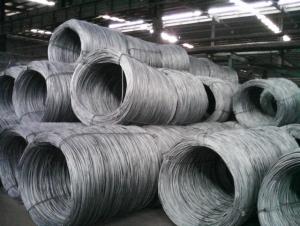Hot Rolled Low Carbon Steel Wire Rods for Nails, Steel Wire Mesh
- Loading Port:
- Tianjin
- Payment Terms:
- TT or LC
- Min Order Qty:
- 25 m.t.
- Supply Capability:
- 100000 m.t./month
OKorder Service Pledge
OKorder Financial Service
You Might Also Like
Product Description:
OKorder is offering Hot Rolled Low Carbon Steel Wire Rods for Nails, Steel Wire Mesh at great prices with worldwide shipping. Our supplier is a world-class manufacturer of steel, with our products utilized the world over. OKorder annually supplies products to African, South American and Asian markets. We provide quotations within 24 hours of receiving an inquiry and guarantee competitive prices.
Product Applications:
Hot Rolled Low Carbon Steel Wire Rods for Nails, Steel Wire Mesh are ideal for structural applications and are widely used in construction and manufacturing. Carbon steel wire rod is mainly used for reinforcement of reinforced concrete and welded structure or reprocessed (roberts , nail, etc.) materials, especially used to produce wire drawing, welding electrode, nails, spring, electronic, precise machinery parts and so on.
Product Advantages:
OKorder's Hot Rolled Low Carbon Steel Wire Rods for Nails, Steel Wire Mesh are durable, strong, and wide variety of sizes. They are newly produced by good quality steel billets.
Main Product Features:
· Premium quality
· Prompt delivery & seaworthy packing (30 days after receiving deposit)
· Can be recycled and reused
· Mill test certification
· Professional Service
· Competitive pricing
Product Specifications:
Steel Grade: SAE1006-1018B
Standard: ASTM, GB
Diameter: 5.5mm, 6.5mm, 7mm,8mm,9mm,10mm,12mm,14mm
Type: in coil, coil weight around 2MT
Alloy or Not: Alloy
Technique: Hot Rolled
Place of Origin: China Mainland
Surface: round, no twisted, light and smooth
FAQ:
Q1: Why buy Hot Rolled Low Carbon Steel Wire Rods for Nails, Steel Wire Mesh from OKorder.com?
A1: All products offered byOKorder.com are carefully selected from China's most reliable manufacturing enterprises. Through its ISO certifications, OKorder.com adheres to the highest standards and a commitment to supply chain safety and customer satisfaction.
Q2: How do we guarantee the quality of our products?
A2: We have established an advanced quality management system which conducts strict quality tests at every step, from raw materials to the final product. At the same time, we provide extensive follow-up service assurances as required.
Q3: How soon can we receive the product after purchase?
A3: Within three days of placing an order, we will arrange production. The normal sizes with the normal grade can be produced within one month. The specific shipping date is dependent upon international and government factors, the delivery to international main port about 45-60days.
Images:
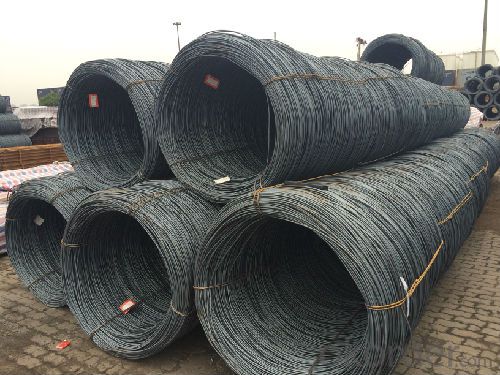
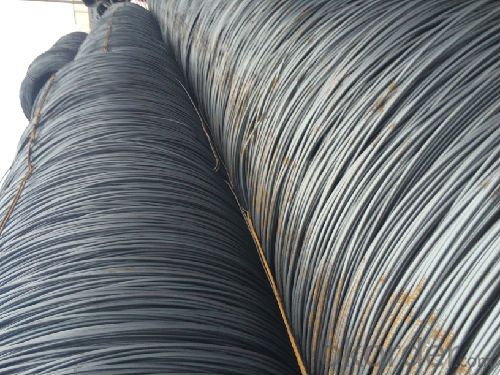
- Q: What are the different surface defects that can lead to failure in steel wire rod?
- Some of the different surface defects that can lead to failure in steel wire rod include cracks, pits, scratches, and surface decarburization. These defects can weaken the wire rod, reducing its strength and leading to potential failure during use.
- Q: What are the common industry conferences for steel wire rod?
- Some common industry conferences for steel wire rod include the International Wire & Cable Symposium (IWCS), the Wire & Cable Conference (W&C), and the Steel Wire Rod Conference (SWRC). These conferences provide a platform for professionals, manufacturers, and researchers in the steel wire rod industry to network, exchange knowledge, and discuss the latest advancements in technology and industry trends.
- Q: How is the steel wire rod market segmented?
- The steel wire rod market is typically segmented based on product type, application, and geography.
- Q: What are the main factors influencing the choice of steel wire rod quality standards?
- The main factors influencing the choice of steel wire rod quality standards are: 1. Application requirements: The intended use of the steel wire rod plays a significant role in determining the quality standards. Different industries have specific requirements for strength, durability, corrosion resistance, and other mechanical properties. The choice of quality standards depends on meeting these application-specific needs. 2. National and international regulations: Steel wire rod quality standards are often regulated by national and international bodies such as ASTM (American Society for Testing and Materials), ISO (International Organization for Standardization), and EN (European Norms). Compliance with these standards is essential to ensure that the steel wire rod meets the necessary safety and performance requirements. 3. Customer specifications: Customers may have their own specific quality standards or requirements that need to be met. These specifications can include chemical composition, mechanical properties, surface finish, and dimensional tolerances. Meeting these customer specifications is crucial to ensuring customer satisfaction and maintaining long-term business relationships. 4. Quality assurance and control: Manufacturers and suppliers of steel wire rod often have their own internal quality assurance and control processes. These processes may include inspections, testing, and certifications to ensure that the wire rod meets the required quality standards. The choice of quality standards is influenced by the manufacturer's ability to meet these internal quality control measures. 5. Cost considerations: The choice of steel wire rod quality standards can also be influenced by cost considerations. Higher quality standards may require more stringent manufacturing processes, testing, and inspections, which can result in higher production costs. Manufacturers and customers need to strike a balance between quality and cost to ensure competitiveness in the market. Overall, the main factors influencing the choice of steel wire rod quality standards are application requirements, national and international regulations, customer specifications, quality assurance and control processes, and cost considerations. By considering these factors, manufacturers and customers can select the appropriate quality standards to meet their specific needs and ensure the desired performance and reliability of the steel wire rod.
- Q: How is steel wire rod used in the manufacturing of wire for suspension systems in trains?
- The manufacturing process of wire for suspension systems in trains heavily relies on steel wire rod. The suspension system is responsible for maintaining stability, reducing vibrations, and ensuring a comfortable ride for passengers. Steel wire rod is used to create the wire that forms the foundation of these suspension systems. To achieve the desired strength and flexibility, steel wire rod undergoes a series of techniques such as hot rolling, cold drawing, and heat treatment. This process allows the wire to endure the high forces and constant stress experienced by the suspension system during train operation. Once the steel wire rod is transformed into wire, it undergoes further processing to create the specific suspension components required for train suspension systems. Depending on the design and requirements of the suspension system, the wire is shaped into coil springs, helical springs, or torsion bars. Coil springs are commonly utilized in train suspension systems to absorb shocks and vibrations caused by uneven tracks or sudden changes in speed. These springs are created by tightly coiling the steel wire rod, enabling them to compress and expand as needed, providing the necessary support and cushioning. On the other hand, helical springs are used to support the weight of the train and maintain the proper ride height. They are formed by twisting the steel wire rod into a helix shape, allowing them to bear the load while offering flexibility and damping properties. Torsion bars, another type of suspension component, are employed to resist twisting forces and provide stability. They are manufactured by giving the steel wire rod a solid bar shape, which is then installed horizontally across the train's suspension system. As the train moves, the torsion bars twist, countering the forces that would otherwise cause the train to tilt or sway. In conclusion, steel wire rod is an essential component in the manufacturing process of wire for suspension systems in trains. It undergoes various processing techniques and is shaped into coil springs, helical springs, or torsion bars. These suspension components ensure stability, absorb shocks and vibrations, and guarantee a smooth and comfortable ride for passengers.
- Q: What are the common production processes for radium-coated steel wire rod?
- The common production processes for radium-coated steel wire rod typically involve several steps. First, the steel wire rod is cleaned and prepared for coating. It is then dipped or sprayed with a radium-based solution to apply a thin layer of radium coating. The coated wire rod is then dried or cured to ensure the adhesion and stability of the radium coating. Finally, the wire rod may undergo additional processes such as cutting, shaping, or packaging, depending on its intended use.
- Q: What is the average carbon content in steel wire rod?
- The average carbon content in steel wire rod typically ranges from 0.06% to 0.15%, depending on the specific grade and intended use of the wire rod.
- Q: How are steel wire rods used in the manufacturing of mesh screens?
- Steel wire rods are used in the manufacturing of mesh screens by being twisted and woven together to form a grid-like pattern. This process creates a strong and durable mesh screen that is commonly used for filtration, separation, or protection purposes in various industries such as mining, construction, and agriculture.
- Q: What are the main factors influencing the choice of steel wire rod buyer?
- The main factors influencing the choice of steel wire rod buyer can vary depending on the specific needs and requirements of the buyer. However, there are several common factors that play a significant role in the decision-making process. 1. Quality: The quality of steel wire rods is of utmost importance to buyers. They consider factors such as the composition, strength, and durability of the wire rods. Buyers will often assess the supplier's quality control measures, certifications, and track record to ensure they are receiving high-quality products that meet their specifications. 2. Price: Pricing is a crucial factor for buyers, as it directly impacts their overall costs. Buyers compare prices from different suppliers to find the most competitive offer without compromising on quality. Negotiations may take place to reach a mutually beneficial agreement. 3. Reliability: Buyers prefer suppliers who can consistently meet their demands and deliver products on time. Reliability in terms of product availability, timely delivery, and consistent performance is crucial for buyers to ensure smooth operations and avoid disruptions in their supply chain. 4. Technical Support: Steel wire rod buyers often require technical support from their suppliers. This includes assistance in selecting the right grade and size of wire rods for their specific applications, providing technical data and specifications, and offering expertise in troubleshooting or addressing any concerns that may arise during usage. 5. Reputation and Trustworthiness: Buyers consider the reputation and trustworthiness of potential suppliers. They may seek references, reviews, and feedback from other customers to assess the supplier's track record and reliability. A good reputation can instill confidence in buyers and make them more likely to choose a particular supplier. 6. After-sales service: Buyers value suppliers who offer excellent after-sales service. This includes providing assistance with any issues or concerns that arise after the purchase, offering warranty or guarantee programs, and providing ongoing support to ensure customer satisfaction. 7. Sustainability and Environmental Considerations: With increasing emphasis on sustainability, buyers are becoming more conscious of the environmental impact of their purchases. They may prefer suppliers who have sustainable and environmentally friendly practices, such as using recycled materials or implementing energy-efficient production processes. In conclusion, the main factors influencing the choice of steel wire rod buyer include quality, price, reliability, technical support, reputation, after-sales service, and sustainability considerations. By considering these factors, buyers can make informed decisions that not only meet their immediate needs but also align with their long-term goals and values.
- Q: What are the different surface defects that can impact the bending properties of steel wire rod?
- Some of the different surface defects that can impact the bending properties of steel wire rod include cracks, pits, scratches, and uneven surfaces. These defects can weaken the overall structure of the wire rod and affect its ability to withstand bending forces without breaking or deforming.
Send your message to us
Hot Rolled Low Carbon Steel Wire Rods for Nails, Steel Wire Mesh
- Loading Port:
- Tianjin
- Payment Terms:
- TT or LC
- Min Order Qty:
- 25 m.t.
- Supply Capability:
- 100000 m.t./month
OKorder Service Pledge
OKorder Financial Service
Similar products
Hot products
Hot Searches
Related keywords

